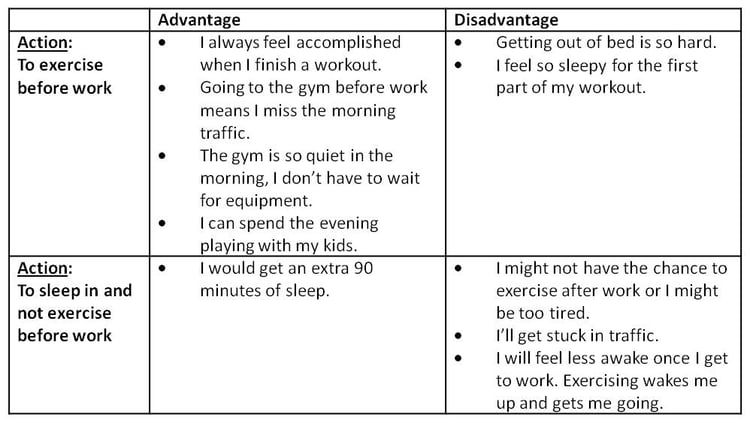You get the required amount of sleep but all day long you still feel you’re in second gear. You’ve tried caffeine and sugar to help pep you up, but nothing seems to work. Luckily, there are some healthy tweaks you can do to help you feel energized all day long. Read below and chat with your doctor on how these nutrition, lifestyle or supplement changes may help you.
 Make Your Meals Count
Make Your Meals Count
You may think that a Frappuccino, an energy drink or a smoothie are the best things to consume to start the day. This may be the very reason why you’re feeling so tired mid-afternoon! Instead start your day with a meal filled with a lean protein, some fiber rich carbohydrates and healthy fats. Did you know that the afternoon sluggish feeling is related to a naturally occurring dip in your circadian rhythm? But having a low fiber, high carb breakfast will amplify that sluggish feeling all day long.
Another place we get into trouble is with our lunch. A large plate of pasta and a soda is sure to leave you feeling tired. The best way to figure out what works for your body is to observe how you feel 30 minutes and two hours after you eat. If you feel a dip in your energy, start playing with your protein, fat and carbohydrate ratio. To start with, try eating a meal that is made up of 45% carbohydrates (vegetables, and whole grain), 10%-35% protein (fish, chicken, lentils) and 20%-35% fat (avocados, nuts, seeds). By incorporating this formula, it will keep your blood sugar in better balance, help prevent that sleepy feeling you get after you eat and improve your energy levels.
Sleep
Problems falling asleep, tossing and turning and not being able to fall back asleep are obvious reasons you may be feeling a lack of energy. The best way to combat these things is to forgo that 3pm caffeine boost and to get in sync with your circadian rhythm. Our natural sleep/wake cycles do best if we go to bed around 10pm and keep a consistent bedtime.
Not being able to go back to sleep after waking up in the middle of the night can be frustrating. It’s almost as if someone has turned on a light in your brain. My favorite two techniques to combat this are: meditation and writing out what’s stressing you out before going to bed.
Stress and Adrenal Fatigue
Being in a consistent stressed-out state can cause you to develop a symptom called Adrenal fatigue. Adrenal fatigue robs you of energy, prevents you from getting a good night sleep and causes you to crave sweet or salty foods. Meditation, yoga and apoptogenic herbs can help combat adrenal fatigue. These healing herbs can help balance the body’s natural response to handle stress by supporting the adrenal system.
The best adaptogen herbs to help boost energy are: ashwagandha, rhodiola, holy basil and ginseng.
B Vitamins
Known as the “energy vitamins”. Having low levels of B vitamins, especially B12, can cause you to feel fatigued. Ironically, having enough B vitamins in your diet also helps with getting a good night sleep. B vitamins are found in foods such as eggs, salmon, beef, chicken, avocado, leafy greens, milk, yogurt and legumes.
Exercise
When you’re feeling tired, the last thing you may want to do is exercise. Exercise is a great way to get your blood moving, which helps your heart and lungs work more efficiency, which in turn gives you more energy. On top of this, exercise increases your endorphin levels. Increased endorphin levels help make you feel good, decrease the feeling of being stressed out and helps you sleep better.
Moderate exercise is all you need. Contact one of your NIFS representatives to learn additional techniques to have more energy or to have them design a customized, and energizing work for you.


.jpg?width=437&name=GettyImages-1279631867%20(1).jpg) When it come to health, certain fats can have a positive effect, whereas other can negatively impact your health. All fats are equal from a caloric standpoint meaning they all contain 9 calories per each gram of fat no matter the type. There are 3 main types of fat - saturated fats, monounsaturated fats, and polyunsaturated fats. The 2020-2025 Dietary Guidelines for Americans recommend that the
When it come to health, certain fats can have a positive effect, whereas other can negatively impact your health. All fats are equal from a caloric standpoint meaning they all contain 9 calories per each gram of fat no matter the type. There are 3 main types of fat - saturated fats, monounsaturated fats, and polyunsaturated fats. The 2020-2025 Dietary Guidelines for Americans recommend that the




 In
In  That’s right, it’s okay to feel unmotivated! After all, it’s a natural feeling that extends to many aspects of our lives. How many of us really feel motivated to fold that last load of laundry? Or make our beds in the morning? Or write that last report of the month? At some point, we all struggle with motivation.
That’s right, it’s okay to feel unmotivated! After all, it’s a natural feeling that extends to many aspects of our lives. How many of us really feel motivated to fold that last load of laundry? Or make our beds in the morning? Or write that last report of the month? At some point, we all struggle with motivation.
 What’s better than chips and guacamole? Tacos and guacamole? Fajitas and guacamole? Or guacamole and a serving of guacamole with a little dish of guacamole on the side? Point is guacamole is amazing and what better way to celebrate the awesomeness of guacamole than Cinco de Mayo. If you plan on indulging in as much guacamole as I do this Cinco de Mayo then maybe a plyometric workout beforehand will keep your conscience at bay when asking your waiter/waitress for that third serving of guac. Here are my 5 favorite plyometric exercises for Cinco de Mayo:
What’s better than chips and guacamole? Tacos and guacamole? Fajitas and guacamole? Or guacamole and a serving of guacamole with a little dish of guacamole on the side? Point is guacamole is amazing and what better way to celebrate the awesomeness of guacamole than Cinco de Mayo. If you plan on indulging in as much guacamole as I do this Cinco de Mayo then maybe a plyometric workout beforehand will keep your conscience at bay when asking your waiter/waitress for that third serving of guac. Here are my 5 favorite plyometric exercises for Cinco de Mayo: